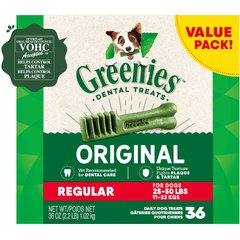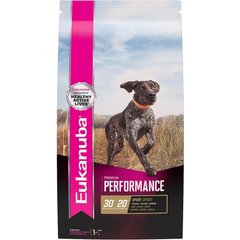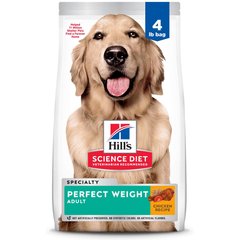7 Health Issues To Look for When You Have an Older Dog
All dogs get older. And like us, dogs age at different rates, especially dogs of different breeds and sizes.
As dogs enter their senior years (around 7 to 10 years old), be prepared for certain changes that might occur in their health. Visit your veterinarian regularly; many vets recommend twice-a-year wellness exams for senior dogs.
If you notice any of the following issues, talk to your veterinarian to determine the course of treatment.
1. Vision Loss and Other Eye Problems
Has your dog become cautious in new situations, easily startled, reluctant to go outside at night, or displays signs of eye discomfort (redness, cloudiness, etc.)? These can all be signs of vision loss or an eye disorder.
Many dogs will develop a cloudiness in their lenses (called lenticular sclerosis) as they age. However, this normal aging change should not significantly affect their vision.
If you notice changes in your dog’s eyes, make an appointment with your vet to rule out treatable eye diseases, such as corneal damage, dry eye syndrome, or conjunctivitis. If your dog has cataracts, those can also be managed or surgically removed.
Some causes of vision loss are irreversible, but there are certain things you can do to help your dog adjust. Ask your veterinarian for tips on handling senior dogs with vision loss.
2. Increased or Strained Urination
Increased urination or straining to urinate may be an indicator of kidney disease, a urinary tract infection, or other health problems that are more commonly seen in middle-aged to older dogs.
Consult your veterinarian if you suspect a problem. Treatment may involve prescription medications, dietary changes, or even surgery.
3. Bad Breath, Bloody Gums, and Other Oral Problems
If you haven’t been diligent about brushing your dog’s teeth and scheduling professional cleanings, they are probably displaying signs of oral disease such as bad breath, excessive drooling, swollen and inflamed gums, and loose teeth.
Home dental care is the best way to keep your dog’s teeth and gums healthy and lengthen the time between cleanings. It’s not too late to start caring for your senior dog’s teeth!
After your veterinarian has taken care of any big problems, brush your dog’s teeth daily using a toothpaste designed specifically for pets. Dental treats and enzymatic chews can also help.
Recommended Products
4. Lumps, Bumps, and Other Skin Problems
Dogs may encounter skin and coat issues at any age, but these issues are more likely as they get older. These may show up as:
But there are often things your veterinarian can do to help alleviate the symptoms or even cure the underlying cause of the issue.
Many dogs develop lumps under their skin as they age. Lipomas (fatty tumors) are common and benign—meaning they usually pose no problem for your pet. However, other more dangerous growths can look very similar to lipomas, so it’s best to have them evaluated by your veterinarian.
Lumps are of increased concern when:
-
They are new
-
They grow
-
They change shape or color
5. Weight Gain or Loss
Some older dogs have difficulty maintaining their weight and may need a dog food with a higher calorie content or better palatability. Other senior dogs tend to gain weight and may need a diet for less active dogs.
Recommended Products
Neither being overweight nor underweight is ideal for your dog. Overweight and obese dogs, for instance, have a higher incidence of health problems such as heart disease, arthritis, and even cancer.
Discuss with your veterinarian whether it’s time to switch to a senior dog diet. In addition, devise an age-appropriate exercise routine for your senior dog with the help of your vet. A proper diet and exercise plan can be important in delaying the signs of aging and increasing your dog’s lifespan.
6. Difficulty Playing and Getting Around
It may be hard for you to see your previously active dog having difficulty getting around the house or playing fetch like before, but joint issues such as arthritis are common in older dogs.
Discuss with your veterinarian whether dietary changes (such as the addition of omega-3 fatty acids or joint supplements) would be helpful. Dog stairs, ramps, and orthopedic dog beds can also help you accommodate your senior dog. Prescription medications can help ease your dog’s discomfort.
Physical rehabilitation can also reverse some mobility losses and is a valuable tool for aging pets.
7. Behavior and Memory Problems
Changes in your dog’s behavior may be a normal part of aging or a symptom of a disease such as dog dementia (canine cognitive dysfunction). Talk to your veterinarian if your dog shows signs of confusion, disorientation, memory loss, irritability, unusual pacing, loss of house training, or other behavior changes.
Some specific signs of canine cognitive dysfunction include:
- Staying awake or pacing at night
- Restlessness and wandering
- Getting stuck in corners
- Forgetting cues (such as sit or stay) they once knew
Featured Image: Adobe/Mary Swift






